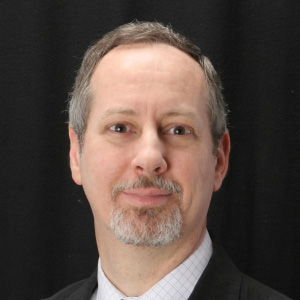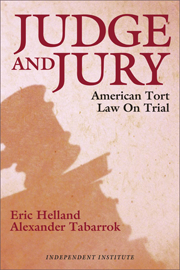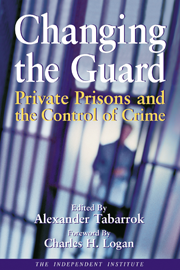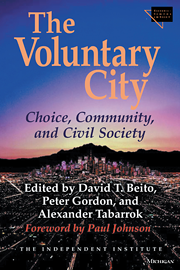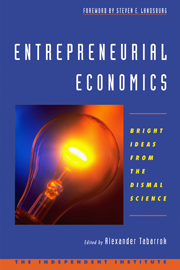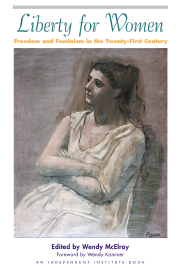In a race to prevent thousands of needless deaths a year, countries from Singapore to Israel are launching innovative new programs to boost organ donation. Alex Tabarrok on paying donors for kidneys, favoritism on waiting lists and the shifting line between life and death.
---------
Harvesting human organs for sale! The idea suggests the lurid world of horror movies and 19th-century graverobbers. Yet right now, Singapore is preparing to pay donors as much as 50,000 Singapore dollars (almost US$36,000) for their organs. Iran has eliminated waiting lists for kidneys entirely by paying its citizens to donate. Israel is implementing a “no give, no take” system that puts people who opt out of the donor system at the bottom of the transplant waiting list should they ever need an organ.
Millions of people suffer from kidney disease, but in 2007 there were just 64,606 kidney-transplant operations in the entire world. In the U.S. alone, 83,000 people wait on the official kidney-transplant list. But just 16,500 people received a kidney transplant in 2008, while almost 5,000 died waiting for one.
To combat yet another shortfall, some American doctors are routinely removing pieces of tissue from deceased patients for transplant without their, or their families’, prior consent. And the practice is perfectly legal. In a number of U.S. states, medical examiners conducting autopsies may and do harvest corneas with little or no family notification. (By the time of autopsy, it is too late to harvest organs such as kidneys.) Few people know about routine removal statutes and perhaps because of this, these laws have effectively increased cornea transplants.
Routine removal is perhaps the most extreme response to the devastating shortage of organs world-wide. That shortage is leading some countries to try unusual new methods to increase donation. Innovation has occurred in the U.S. as well, but progress has been slow and not without cost or controversy.
Organs can be taken from deceased donors only after they have been declared dead, but where is the line between life and death? Philosophers have been debating the dividing line between baldness and nonbaldness for over 2,000 years, so there is little hope that the dividing line between life and death will ever be agreed upon. Indeed, the great paradox of deceased donation is that we must draw the line between life and death precisely where we cannot be sure of the answer, because the line must lie where the donor is dead but the donor’s organs are not.
In 1968 the Journal of the American Medical Association published its criteria for brain death. But reduced crime and better automobile safety have led to fewer potential brain-dead donors than in the past. Now, greater attention is being given to donation after cardiac death: no heart beat for two to five minutes (protocols differ) after the heart stops beating spontaneously. Both standards are controversial—the surgeon who performed the first heart transplant from a brain-dead donor in 1968 was threatened with prosecution, as have been some surgeons using donation after cardiac death. Despite the controversy, donation after cardiac death more than tripled between 2002 and 2006, when it accounted for about 8% of all deceased donors nationwide. In some regions, that figure is up to 20%.
The shortage of organs has increased the use of so-called expanded-criteria organs, or organs that used to be considered unsuitable for transplant. Kidneys donated from people over the age of 60 or from people who had various medical problems are more likely to fail than organs from younger, healthier donors, but they are now being used under the pressure. At the University of Maryland’s School of Medicine five patients recently received transplants of kidneys that had either cancerous or benign tumors removed from them. Why would anyone risk cancer? Head surgeon Dr. Michael Phelan explained, “the ongoing shortage of organs from deceased donors, and the high risk of dying while waiting for a transplant, prompted five donors and recipients to push ahead with surgery.” Expanded-criteria organs are a useful response to the shortage, but their use also means that the shortage is even worse than it appears because as the waiting list lengthens, the quality of transplants is falling.
Routine removal has been used for corneas but is unlikely to ever become standard for kidneys, livers or lungs. Nevertheless more countries are moving toward presumed consent. Under that standard, everyone is considered to be a potential organ donor unless they have affirmatively opted out, say, by signing a non-organ-donor card. Presumed consent is common in Europe and appears to raise donation rates modestly, especially when combined, as it is in Spain, with readily available transplant coordinators, trained organ-procurement specialists, round-the-clock laboratory facilities and other investments in transplant infrastructure.
The British Medical Association has called for a presumed consent system in the U.K., and Wales plans to move to such a system this year. India is also beginning a presumed consent program that will start this year with corneas and later expand to other organs. Presumed consent has less support in the U.S. but experiments at the state level would make for a useful test.
Rabbis selling organs in New Jersey? Organ sales from poor Indian, Thai and Philippine donors? Transplant tourism? It’s all part of the growing black market in transplants. Already, the black market may account for 5% to 10% of transplants world-wide. If organ sales are voluntary, it’s hard to fault either the buyer or the seller. But as long as the market remains underground the donors may not receive adequate postoperative care, and that puts a black mark on all proposals to legalize financial compensation.
Only one country, Iran, has eliminated the shortage of transplant organs—and only Iran has a working and legal payment system for organ donation. In this system, organs are not bought and sold at the bazaar. Patients who cannot be assigned a kidney from a deceased donor and who cannot find a related living donor may apply to the nonprofit, volunteer-run Dialysis and Transplant Patients Association (Datpa). Datpa identifies potential donors from a pool of applicants. Those donors are medically evaluated by transplant physicians, who have no connection to Datpa, in just the same way as are uncompensated donors. The government pays donors $1,200 and provides one year of limited health-insurance coverage. In addition, working through Datpa, kidney recipients pay donors between $2,300 and $4,500. Charitable organizations provide remuneration to donors for recipients who cannot afford to pay, thus demonstrating that Iran has something to teach the world about charity as well as about markets.
The Iranian system and the black market demonstrate one important fact: The organ shortage can be solved by paying living donors. The Iranian system began in 1988 and eliminated the shortage of kidneys by 1999. Writing in the Journal of Economic Perspectives in 2007, Nobel Laureate economist Gary Becker and Julio Elias estimated that a payment of $15,000 for living donors would alleviate the shortage of kidneys in the U.S. Payment could be made by the federal government to avoid any hint of inequality in kidney allocation. Moreover, this proposal would save the government money since even with a significant payment, transplant is cheaper than the dialysis that is now paid for by Medicare’s End Stage Renal Disease program.
In March 2009 Singapore legalized a government plan for paying organ donors. Although it’s not clear yet when this will be implemented, the amounts being discussed for payment, around $50,000, suggest the possibility of a significant donor incentive. So far, the U.S. has lagged other countries in addressing the shortage, but last year, Sen. Arlen Specter circulated a draft bill that would allow U.S. government entities to test compensation programs for organ donation. These programs would only offer noncash compensation such as funeral expenses for deceased donors and health and life insurance or tax credits for living donors.
World-wide we will soon harvest more kidneys from living donors than from deceased donors. In one sense, this is a great success—the body can function perfectly well with one kidney so with proper care, kidney donation is a low-risk procedure. In another sense, it’s an ugly failure. Why must we harvest kidneys from the living, when kidneys that could save lives are routinely being buried and burned? A payment of funeral expenses for the gift of life or a discount on driver’s license fees for those who sign their organ donor card could increase the supply of organs from deceased donors, saving lives and also alleviating some of the necessity for living donors.
Two countries, Singapore and Israel, have pioneered nonmonetary incentives systems for potential organ donors. In Singapore anyone may opt out of its presumed consent system. However, those who opt out are assigned a lower priority on the transplant waiting list should they one day need an organ, a system I have called “no give, no take.”
Many people find the idea of paying for organs repugnant but they do accept the ethical foundation of no give, no take—that those who are willing to give should be the first to receive. In addition to satisfying ethical constraints, no give, no take increases the incentive to sign one’s organ donor card thereby reducing the shortage. In the U.S., Lifesharers.org, a nonprofit network of potential organ donors (for which I am an adviser), is working to implement a similar system.
In Israel a more flexible version of no give, no take will be phased into place beginning this year. In the Israeli system, people who sign their organ donor cards are given points pushing them up the transplant list should they one day need a transplant. Points will also be given to transplant candidates whose first-degree relatives have signed their organ donor cards or whose first-degree relatives were organ donors. In the case of kidneys, for example, two points (on a 0- to 18-point scale) will be given if the candidate had three or more years previous to being listed signed their organ card. One point will be given if a first-degree relative has signed and 3.5 points if a first-degree relative has previously donated an organ.
The world-wide shortage of organs is going to get worse before it gets better, but we do have options. Presumed consent, financial compensation for living and deceased donors and point systems would all increase the supply of transplant organs. Too many people have died already but pressure is mounting for innovation that will save lives.

